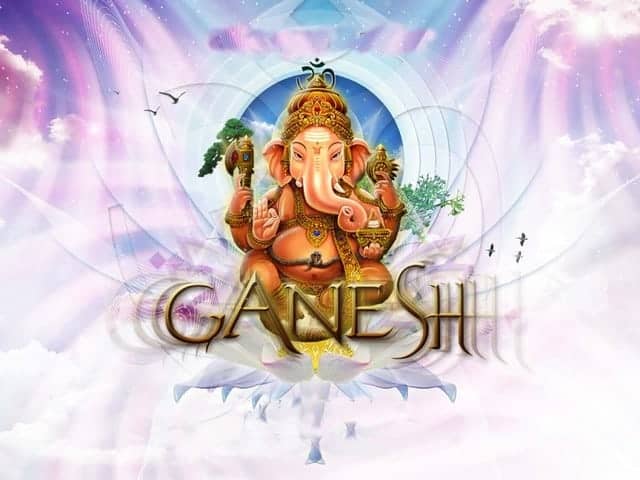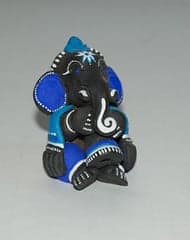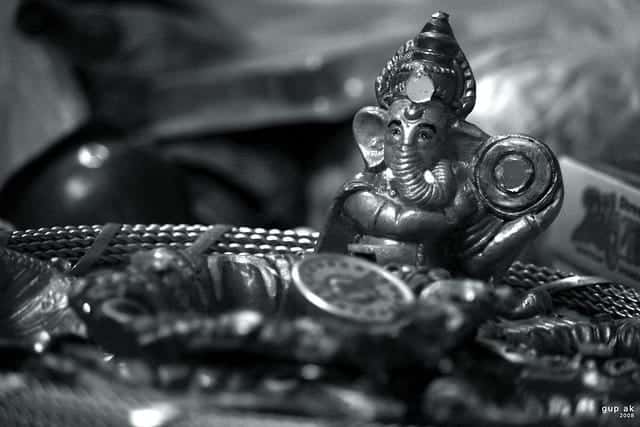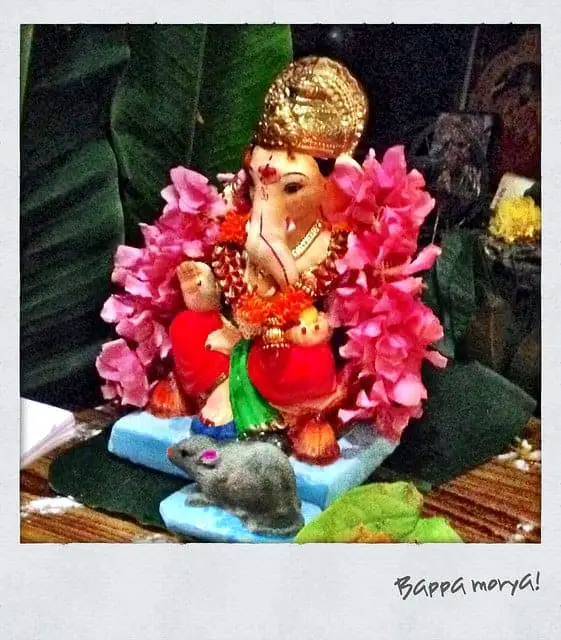God Ganesha is easy to recognize in the pantheon of Hindu deities. Devotees worship the elephant-headed deity as the remover of obstacles and the granter of wishes. The word ‘Ganesha’ literally means the God of the ‘Gana’ or the disciples of Shiva. He always receives the first prayers in any worship by the boon of Shiva who granted him this privilege.
The following are the theories we found, why God Ganesh prayed first:
- According to the myths, Shiva had to kill the stubborn Ganesha first. Later, on realizing this mistake, he amended by resurrecting him and granting him the boon of receiving the first worship.
- Once upon a time, there was a competition between Ganesha and his sibling Karthikeya as to who is the greatest. To determine the results, they decided to travel around the world and see who comes first. While Karthikeya set out, Ganesha very cleverly made three rounds around the seated Shiva Parvati. He said that his parents are the entire world so by circling them, he travels the world. Seeing his intelligence, he was granted the boon to receive the first worship.
- There is also another Yogic belief. Yogis believe that the deity Ganesha rules the mooladhar chakra of the spiritual body. To receive blessings from him opens the path of spiritual realizations and leads a soul to achieve Moksha from the cycle of rebirth.

Who is Ganesha?
The myths recount several anecdotes of the birth of Ganesha. The most well-known among these is the incident related above. In this story, as it happens, Goddess Parvati, wife of Shiva, once found it very distressing that she cannot have her exclusive private space during bathing. This resentment actually stemmed from an earlier time when Shiva entered her bathing chambers, even though Nandi, the bull of Shiva was on guard at the door!

Annoyed by such behavior from the master of the house, Parvati decided to take matters into her own hands. She gathered the turmeric ointment that she used while bathing and created the image of a boy. Then the Adi-Shakti, consort of Shiva breathed life into this boy and asked him to stand guard at the doors to prevent anyone from coming in, whosoever that be. Endowed with this power, this strange child stood at the door and prevented Shiva, the master of the house to enter the private room of Parvati.
Shiva, quite taken aback, sent his the army of his disciples (or the ‘Gana’) to defeat this new deity. However, none of them stood a chance. Vishnu and other deities rushed to the war, sought by this great and sudden battle, but they also lost it. Even Karthikeyan, the first son of Shiva, lost the conflict. Seeing and enraged by all these, Shiva himself came to the war and flung his trident, immediately beheading the young warrior!
Hearing all these, and struck with great grief, Parvati vowed to destroy the creation in revenge. Ferocious yoginis emanated from her divine body to take everything captive. As this magnificent and destructive ego clash between the Holy Father and the Holy Father was in the process, the wisdom of Brahma came to the rescue. Along with Vishnu, the preserver, He pleaded that Parvati withdraws her fatal self to prevent this great annihilation. Placated by their prayers, the Great Goddess asked to revive Ganesha and to see that the resurrected God receive the foremost position in any worship. Shiva, having calmed down in the meanwhile and regretfully granted the boons. He asked his disciples to bring in the head of the first creature that died with a north-facing stare. The head of an elephant was found, which Shiva placed on the neck of the decapitated boy and called him Ganesha, or the God of disciples.

Other Myths
There are other stories relating to the birth of Ganesha as well, and of his becoming the elephant-headed one. In all these different myths, it is always by the blessing of Shiva that Ganesha receives the foremost worship.
One such myth relates that once Vishnu gave Parvati the blessing that he would appear to her as a child, and so he was born in her dreams and came to life. The Goddess delighted with this magical child was doting with pride and she called all Gods to show her little one. Among this divine congregation was Lord Shani, the presiding deity of the fates. He had upon him a curse that if he sees anyone eye to eye, that other being would die immediately. Being aware of this curse, Shani sought forgiveness from Parvati that he could not see the child.
He always kept his gaze downwards. However, as the goddess was adamant, he finally gave in and looked. At this, the head of Ganesha fell off immediately. The Holy Mother fainted in grief. Vishnu came to the rescue. He cut off the head of the elephant of Indra who, having received a blessing of being invincible, posed a threat to the world. This head was placed on the dead child who came to life again. Shiva made him the king of all his gana or the disciples and gave the name Ganapati or Ganesha.
Yet another myth recounts the story of Gajasura or the elephant-headed demon. This demon happened to be a devotee of Shiva and observed severe penance to gain the blessings from his Master. Shiva gave him the blessings of being invincible. The demon also sought permission from Shiva to hold the Great Lord in its stomach! Shiva, being the ocean of compassion, granted this boon also and disappeared from the divine world, staying in the belly of the demon. Goddess Parvati approached Vishnu for help.
The preserver God slew the demon by trick, by pleasing it with flute after taking a disguise and raising its willingness to give anything the disguised Vishnu sought. When the time for fulfilling this wish came, Vishnu asked the demon to give away Shiva by cutting its own stomach. At this, the demon realized its end and he prayed that his figure should be in remembrance as someone who defeated even Shiva. To grant that wish, when the head of the magical child was gone, the head of the demon was put there.
Another story related that Ganesha was born of Shiva’s dream when he was known as Rudra. In yet another legend, it states that once upon a time Parvati threw away used bathing water in the holy river Ganga. There the elephant-headed Goddess Malini drank it and gave birth to a five-headed elephant-human. Shiva christened this child as the son of Parvati and reduced the number of heads to one.

Believing in Ganesha
Ganesha is prayed as the remover of stubborn obstacles from life. Furthermore, it also teaches never to lose hope and be persistent in achieving ambitions. The purpose of ancient stories is always to teach deep lessons about life. All these myths also relate to the end of ego in both man and woman. The stories also praise the birth of a new life with the blessing of God.
Ganesh Poojas and Visharjan
Although Ganesha receives worship all over India on all occasions, the Ganesha ceremony is particularly famous in Mumbai. During Ganesh Chaturthi, huge idols of the tusked God are worshipped for ten days among huge festivities. On the 11th day, the idol is immersed in a water body. In Mumbai, the ritualistic immersion is done in the Arabian Sea among huge fanfare every year. Ganesha is also worshipped with Laxmi during the night of Deepawali.
Other names of Ganesha
The elephant God has a few other names. Ganapati also means the same as Ganesha. Gajanan means one with an elephant head. Another name is Vinayak, which means a wise man. Vignesh is yet another name that means one who ends obstacles. In one version of the birth of Ganesha, he is called the Mahotkat Vinayak, with ten arms and a red body. Here he is the son of the great sage Kashyap and Aditi and rides an elephant for the destruction of demons. He is also called Mayureshwar when he rides a peacock. He is also known as Dhumraketu when he rides a blue horse and has ashen complexion.
Let the blessings of Lord Ganesha bring success to your life, in all your ventures. Worship Ganesha for wisdom and intelligence at the beginning of anything new.
God Bless!
